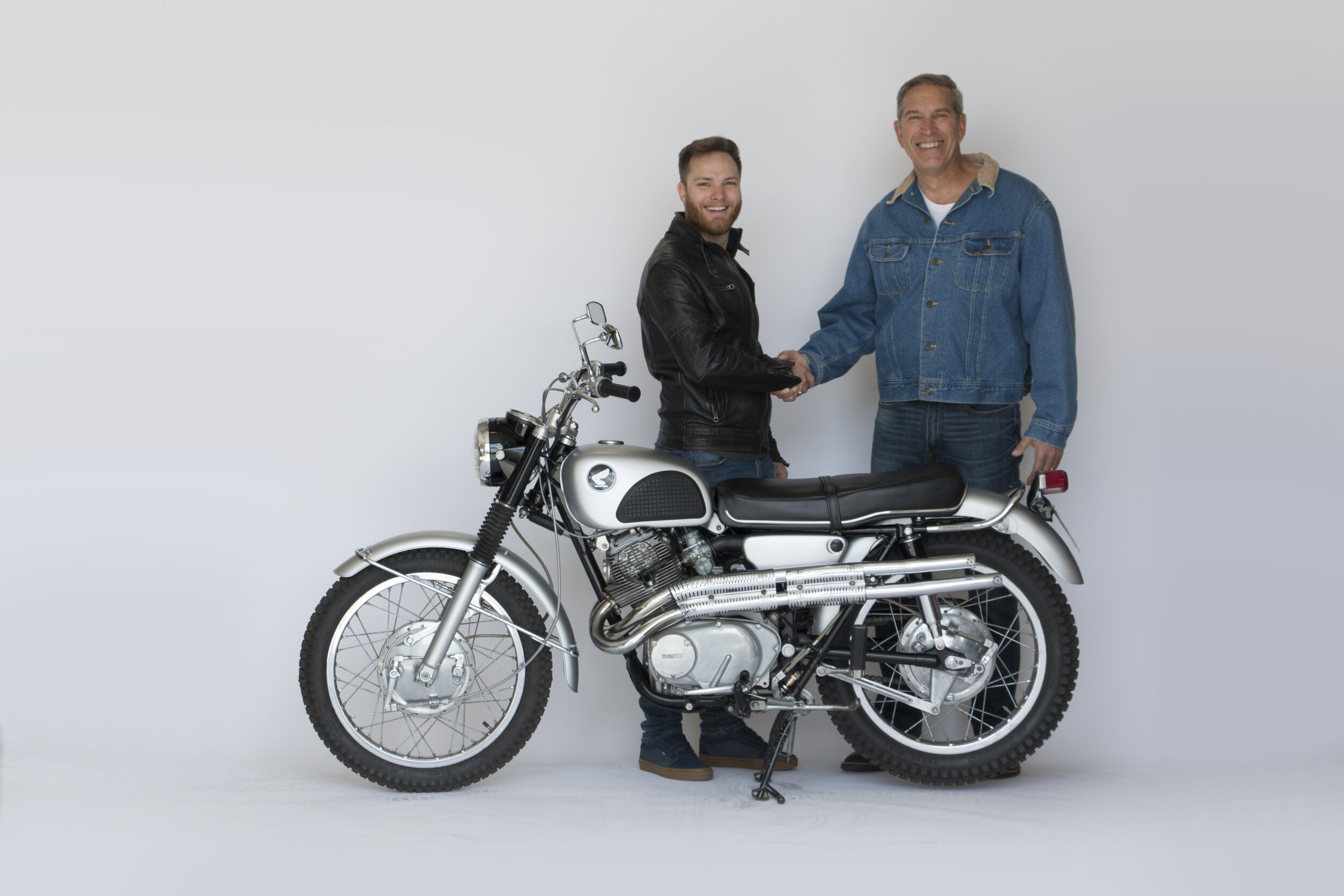Scrambler
I restored this 1967 Honda CL77 305 Scrambler motorcycle to its original condition. This project showcases my mechanical knowledge and hands-on practical skills.
The restoration consisted of a complete rebuild. After disassembly, I had the frame sandblasted and powder-coated and had everything else painted to the original colors. I rebuilt the engine, honed the cylinders, replaced the rings and seals, constructed a new wiring harness from the manual, reupholstered the seat, and replaced the tires and any other items with OEM parts.
Problem
Brian had an old motorcycle that he purchased as a young adult that didn’t run and required repair. Many of the body panels had been spray-painted blue; parts were scratched, dented, worn, or missing altogether.
Hi, I’m Brian. “I have a classic 1967 Honda Scrambler, and I would love to have it running again and restored to its original condition.”
Solution
After six months of work and many late nights, the Scrambler looked flawless. I determined that the reason the motorcycle wouldn’t run was because of a faulty connection in the ignition coils.
Photoshoot
I set up and conducted the motorcycle photoshoot using a nine-foot seamless, three studio lights, tripod, and DSLR camera. I edited the photos using Adobe Lightroom and Photoshop.
“As a young boy, it was my dream to own and ride a Honda 305 Scrambler. When I saw the completed bike, I couldn’t believe my eyes.” - Brian
SCRAMBLER history
In 1967, Honda came out with the CL77 305 Scrambler. This model differed from its predecessors, the CB77 Super Hawk, and the CA77 Dream. Designed to be capable of off-road terrain, the Scrambler featured side-mounted pipes creating more ground clearance and a reinforced tube steel frame.
Aside from the styling, what made this bike stand out was its sound. The side-mounted straight pipes from the 305.4 cc motor turned people's heads from blocks away. Redlining at 9000 rpm, this bike had a distinct sound compared to most of the other low-revving bikes of the 1960s. The pipes were so loud that snuff-or-nots could be added to intermittently dampen the sound, which probably saved folks from a lot of noise tickets. Later, stock mufflers were added but were often cut off. This bike was the bee's knees and continues to be very popular, even in its increasing rarity.
disassembly
I disassembled the motorcycle to clean each part and analyze them for damage. To stay organized, I reassembled mechanisms with lots of little pieces into larger components. Everything had to be removed from the frame for it to be powder-coated.
Powder-coat and paint
Everything black was powder-coated, and everything silver was painted. Powder-coat is a more durable surface finish than paint, but it is not available in specific colors. This silver paint is the original color for the Scrambler.
It Starts
There are four things that engines need to run: fuel, compression, timing, and spark. After following the electricity with a voltmeter and fixing the faulty connection to the ignition coils, the motorcycle started right up.






















